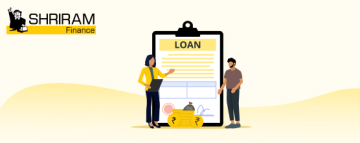When you face financial needs like urgent medical bills, home repairs, or education costs, many people consider credit options for help. Two popular choices are personal loans and lines of credit. While both let you borrow money, they differ in how they are structured, how flexible they are, how you repay them, and how you can use the funds.
This article offers a thorough look at the personal loan vs line of credit comparison, helping you understand how each works, their advantages, and when to consider them. If you’re uncertain about which to choose, this guide is tailored to give you the clarity you need.
What is a Personal Loan?
A personal loan is a fixed amount of money borrowed from a bank, non-banking financial companies (NBFC), or another loan provider, which is repaid in equal monthly instalments (EMIs) over a specific term. It’s typically used for a one-time expense and comes with a set interest rate and repayment schedule.
Common Uses of Personal Loans:
- Home repairs or renovation
- Marriage-related expenses
- Travel or relocation costs
- Consolidation of existing debts
- Education-related payments
What is a Line of Credit?
A line of credit (LOC) functions more like a flexible pool of funds. Instead of receiving a lump sum, you are approved for a maximum borrowing limit. You can withdraw any amount within that limit as needed, and interest is charged only on the amount utilised.
Common Uses of Lines of Credit:
- Managing unpredictable monthly cash flows
- Covering variable business expenses
- Handling irregular personal expenses
- Emergency preparedness
Key Differences: Personal loan vs Credit Line Comparison
Here’s a side-by-side comparison to understand the distinctions better:
| Feature | Personal Loan | Line of Credit |
| Loan Amount | Disbursed as a lump sum | Withdraw as needed within a limit |
| Interest | Charged on the full loan amount | Charged only for the amount used |
| Repayment Type | Fixed Equated monthly instalments (EMI) | Flexible repayment, often with minimum dues |
| Tenure | Fixed term (1-5 years typically) | Can be revolving or open-ended |
| Purpose | Ideal for one-time major expenses | Suitable for ongoing or uncertain needs |
| Flexibility | Low | High |
How Personal Loans Work
A personal loan lets you borrow a fixed amount of money for any purpose, unlike some loans that are limited to specific uses. When you apply, the lender checks your eligibility based on your income, job status, credit history, and current debts. If approved, you get the full loan amount as a lump sum in your bank account.
You then repay the loan in fixed monthly instalments (EMIs) over an agreed period. Each EMI includes part of the principal (the original loan amount) plus interest on the remaining balance. Early payments mostly cover interest, while later payments reduce more of the principal.
Key points to remember are: once your loan is approved, the amount is fixed and paid out upfront. You cannot borrow extra money under the same loan. Your monthly repayments and the number of instalments are fixed based on the loan amount, interest rate, and loan term you chose. Paying your EMIs on time is essential to keep a good credit score and qualify for future loans.
How Lines of Credit Work
A line of credit works differently from a regular personal loan. With a line of credit, you are approved for an overall maximum borrowing limit, but you do not receive the full amount upfront like a loan. Instead, you can withdraw only as much as you need at any given time, whenever you need it. So it offers more flexibility than a fixed loan.
The way it works is - after getting approved for a line of credit account, you can withdraw money from your available credit limit whenever required, just like making charges on a credit card. You only pay interest on the amount you actually utilise or withdraw, unlike a loan where interest accrues on the full sanctioned amount right from disbursal.
As you make payments into the account over time, the principal outstanding reduces and your available credit limit gets replenished. So you can redraw from the restored limit again if an additional need arises. This makes lines of credit very useful to manage uncertain or recurring financial needs where borrowing requirements are not fully known upfront.
The line of credit allows you control over your borrowing while paying interest only for what you actually utilise. In most cases, the credit line remains open as long as you make timely repayments and your account remains in good standing. It does not have to be closed like a loan once fully repaid. This gives flexibility to borrow again if needed.
Benefits of Personal Loan
Here are some of the advantages of a personal loan:
- Set EMIs: Planning your finances and budgeting will be easier as you will know what your cost will be compared to a credit card or overdraft that can vary depending on some factors.
- Low Interest Rates: The interest rates on personal loans can also be favourable compared to some types of revolving credit, like credit cards or lines of credit, particularly with various factors like good credit profiles.
- No Collateral: For a good credit history, unsecured personal loans have no collateral asset. The outcome is making the funding process much easier to attain.
- Payment Discipline: Personal loans have an enforced structure (EMIs) which can help you develop financial accountability through enforced structure compared to flexible repayments which you might spend when tempted to over-borrow using a credit card or line of credit, or overdraft.
- Lumpsum Funding: Personal loans offer the amount you need all at once for a pre-defined and allocated purpose, so for you to do your projects with personal loan funding there could be a list of project goals.
Benefits of Lines of Credit
The benefits of lines of credit revolve around flexibility and convenience. It’s ideal for situations where expenses arise unpredictably or in phases.
- Pay Interest Only on Usage: Lines of credit charge interest only on the utilised amount, not the full sanctioned limit. This saves costs when borrowing is intermittent.
- Flexible Multiple Withdrawals: You can withdraw multiple times up to the approved limit without fresh loan applications, suiting urgent, evolving needs.
- Reusable Credit Facility: Repaid amounts can be borrowed again without reapplying, enabling repeated use for ongoing financial requirements.
- Cash Flow Control: It helps manage unexpected expense spikes or revenue drops through timely credit access, especially useful for businesses.
- Short Term Funding: Ideal for unpredictable or recurring short-term funding needs, unlike fixed tenure personal loans. Saves reapplying.
When to Choose Each Option
The decision between a personal loan and a line of credit depends entirely on your financial goal, repayment ability, and how predictable your expenses are.
Choose a Personal Loan if:
- You need a lump sum amount.
- You want fixed monthly repayments.
- You prefer a structured loan term.
- Your requirement is for a specific purpose, like education or travel.
Choose a Line of Credit if:
- Your financial needs are spread out or uncertain.
- You want flexible repayments.
- You are managing a business or variable income.
- You’re looking for backup funds for emergencies.
Conclusion
In the ongoing debate of personal loan vs line of credit comparison, there’s no one-size-fits-all answer. Both have their place in financial planning. Personal loans offer security and structure. Lines of credit offer freedom and flexibility.
Your choice should align with your expense type, repayment discipline, and financial habits. For significant, immediate expenses, a personal loan might suit you better. For ongoing or unpredictable needs, a line of credit could provide more control.
Financial literacy lies in choosing not just what works now, but what works best in the long run.
































